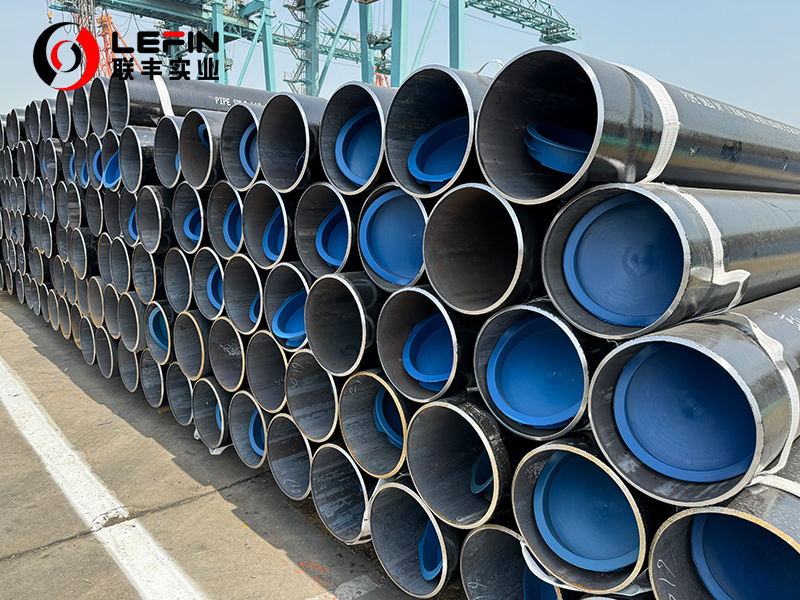What Are The Precautions For Storing Steel Pipes
Release time:
2025-11-12
There are indeed many professional considerations for the storage of steel pipes. The correct approach can effectively prevent steel pipes from rusting, deforming or losing their performance, thereby ensuring their quality and extending their service life. The following is a table to help you quickly understand the core points:
| Storage stage | Key Requirement | Key operations/precautions |
| Site selection | Clean, dry and well-ventilated | It should be kept away from areas that produce harmful gases or dust, and must not be stored together with corrosive materials such as acids, alkalis, salts, and cement |
| Ground treatment and elevation | Avoid direct contact with the ground and ensure that the bottom is well-ventilated and moisture-proof | Sleepers, flagstones or material racks must be used for elevation. It is recommended that the height of the steel pipe from the ground be no less than 0.2 meters. When stored outdoors, the bottom of the stack should be raised by 0.3 to 0.7 meters |
| classified storage | Store by type, specification, material and furnace number (batch number) in separate zones | Prevent confusion and mutual contact corrosion. Steel pipes of different types should be stacked separately. Steel pipes of similar specifications and materials but different batch numbers should not be stored on the same material rack or stack. |
Stacking method | Stable, neat, "first in, first out" | The stacking height should not exceed 1.2 meters manually and 1.5 meters mechanically. The stack width should not exceed 2.5 meters, and an inspection passage (about 0.5 meters) should be reserved.The stack surface can be slightly inclined to facilitate drainage |
Protect the packaging and coating | Keep the protective layer intact as it was at the factory | The preservatives or other coatings and packaging applied by steel mills before leaving the factory are important measures to prevent steel pipes from rusting. During transportation and storage, damage should be avoided |
Surface treatment and regular inspection | Regularly inspect and promptly deal with rust or dirt | For high-quality steel, alloy steel, thin-walled pipes, etc., after cleaning, anti-rust oil can be applied to both the inner and outer surfaces before storage. If rust is found, it should be removed in time and anti-rust treatment should be carried out again. |
💡 Pay special attention according to the type of steel pipe
Different types of steel pipes have their specific storage requirements:
Precision steel tubes, cold-rolled/cold-drawn tubes, and thin-walled tubes: These types of steel tubes are expensive, have high requirements for surface finish, and are prone to damage. It must be stored in the warehouse. Open-air storage is strictly prohibited. Before storage, cleaning and anti-rust treatment (such as applying special anti-rust oil) are required.
Extra care should be taken during handling and stacking to avoid bumps and scratches.
Large steel pipes (such as large-diameter pipes, rails, and section steel) :
They can be stored outdoors, but the bottom must be raised and padded firmly. The stack surface should be slightly inclined to facilitate drainage and prevent water accumulation.
Medium and small-sized steel pipes (such as medium and small-sized sections and medium-diameter steel pipes):
They should be stored in well-ventilated material sheds and properly covered on top and padded at the bottom.
⚠️ Safe operation and daily maintenance
In the daily maintenance of steel pipes, safe operating habits are of vital importance:
Standardized hoisting:
When hoisting steel pipes, they should be lifted and lowered gently, and the operation should be stable, accurate and light. It is strictly prohibted to pull the steel pipe at an Angle with a steel wire rope to prevent it from falling off or deforming.
Regular inspection:
Regularly inspect the warehouse environment, the surface condition of steel pipes, and the safety of hoisting equipment.
Keep clean:
Keep the warehouse clean and promptly remove debris and accumulated water.
By following these professional storage and management methods, not only can the quality of steel pipes be effectively maintained, but also unnecessary losses can be reduced and production safety ensured.

Tags:
Relevant Project

Address: Hengtai Road,Daqiuzhuang Town,Jinghai County,Tianjin,China
Mob: +8615122229899(whatspp)
Phone: +86 22 58171905
Fax: +86 22 58171902
E-mail:info@lefinsteel.com
Get company updates

Tianjin Lefin Industrial Co.,Ltd. All rights reserved City sub-station SEO www.300.cn

